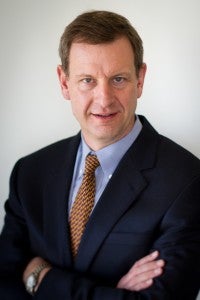This commentary originally appeared on EDF’s California Dream 2.0 blog.
 For over two years, EDF has been working to establish an On-Bill Repayment program in California that would allow property owners to finance energy efficiency or renewable generation projects and repay the obligation through their utility bill. Since utility bills tend to get paid and the obligation could ‘run with the meter’, defaults are expected to be low, which will improve the availability and reduce the cost of financing. In May 2012, the California Public Utilities Commission (“CPUC”) agreed with our position and ordered the large utilities in California to develop a program for commercial properties. EDF estimates that this program could generate $5B of investment over 12 years, which is expected to support 36,000 jobs.
For over two years, EDF has been working to establish an On-Bill Repayment program in California that would allow property owners to finance energy efficiency or renewable generation projects and repay the obligation through their utility bill. Since utility bills tend to get paid and the obligation could ‘run with the meter’, defaults are expected to be low, which will improve the availability and reduce the cost of financing. In May 2012, the California Public Utilities Commission (“CPUC”) agreed with our position and ordered the large utilities in California to develop a program for commercial properties. EDF estimates that this program could generate $5B of investment over 12 years, which is expected to support 36,000 jobs.
Unfortunately, we are still waiting for the nonresidential OBR pilot in California to be implemented and if the utilities get their way, we may be waiting for close to another full year. The California utilities appear to be fearful of change, distributed generation, and the impact of reduced demand. They have employed aggressive tactics with teams of lawyers arguing and re-arguing every potential issue, even after the issues have presumably been settled by the CPUC.
This stands in sharp contrast to what is happening in Hawaii. On March 25, the Hawaii Public Utilities Commission (“HPUC”) ordered the primary Hawaii utility, Hawaiian Electric Company, (“HECO”) to establish an OBR program for residential and commercial customers. I just returned from 3 days in Honolulu and it appears that they are working cooperatively to get the program running in the first quarter of 2014. This timetable of 12 months from HPUC order to implementation is less than half of what we seem to need in California, despite the fact that the Hawaii program covers a much broader range of property types and relies on public as well as private sources of financing.
The difference in timelines seems to be driven by the attitudes of the utilities. While HECO is working to solve problems, the California utilities are looking to create roadblocks. I saw this in action last week in Hawaii.
One of the key design elements of an OBR program is a method to allocate the money when a customer pays only part of the bill. As you would imagine, the utilities generally want to be paid first. Unfortunately, we have heard from both prospective lenders and rating agencies that this would make an OBR program largely unattractive. Their concern is that a utility that is getting paid in full might lack incentive to aggressively collect any money still owed to the bank. EDF has advocated that partial payments be allocated proportionally to the amount owed to each party. That seems fair to us and last May the CPUC agreed and ordered the program be established that way. Unfortunately, that has not been the end of the story. The utilities have complained that this was expensive to do (evidently their billing systems are run with an abacus), that this would somehow increase their credit losses (OBR actually has the banks sharing utility credit losses that the utilities would otherwise incur) and, most improbably, that proportional allocation is somehow illegal.
Last week, I braced myself when a HECO representative started talking about how expensive it would be to implement proportional payments. Besides, since it does not happen very often, why do the banks care so much? I replied with an explanation of why it mattered and finished with a challenge. “If partial payments don’t happen very often, why not let the banks get paid first?”
Much to my delight, his reply was, “We have been discussing that option and may very well go that direction.”
HECO is clearly a utility that wants to help their customers reduce utility bills and looks to solve problems. I only wish our California utilities could develop that kind of can-do attitude to get an OBR program running by early next year.









